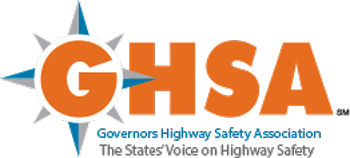With Distracted Driving Awareness Month kicking off on April 1, the Governors Highway Safety Association (GHSA) and General Motors (GM) are proud to announce the development of an action-oriented, recommendation-rich report that will take a new look at distracted driving, with expected publication this summer. The goal of the report is to reduce this persistent yet preventable driving behavior and change the social norm so all road users get home safely.
 Supported by GM, GHSA will release the comprehensive report, which will examine data collection and other distracted driving challenges and identify actions that State Highway Safety Offices (SHSOs) and their partners can take to effectively address them. Through GM grant funding, GHSA will also offer competitive grants to SHSOs to help them implement the recommended actions in the forthcoming report. Grants will fund distracted driving prevention activities in several awarded states and will also serve as a model for other states and their partners seeking to expand their anti-distraction efforts.
Supported by GM, GHSA will release the comprehensive report, which will examine data collection and other distracted driving challenges and identify actions that State Highway Safety Offices (SHSOs) and their partners can take to effectively address them. Through GM grant funding, GHSA will also offer competitive grants to SHSOs to help them implement the recommended actions in the forthcoming report. Grants will fund distracted driving prevention activities in several awarded states and will also serve as a model for other states and their partners seeking to expand their anti-distraction efforts.
The National Highway Traffic Safety Administration (NHTSA) reported earlier this month that 3,142 people died in distraction-related crashes in the U.S. in 2020, accounting for 8.1% of roadway fatalities. Additionally, another 400,000 people are injured each year in distracted-related crashes. However, the true numbers are likely much higher due to underreporting. Distracted driving is especially dangerous for people walking, biking or otherwise outside of a vehicle. Non-motorists accounted for nearly one in five distracted driving crash deaths in 2019, according to NHTSA.
 “General Motors is committed to helping create a future with zero crashes, and we’re thrilled to support GHSA as they aim to reduce distracted driving and unsafe behavior on the road,” said Regina Carto, Vice President of Global Product Safety & Systems at GM. “GHSA’s efforts to identify actions that communities can take to reduce this unsafe behavior can help GM’s vision become a reality.”
“General Motors is committed to helping create a future with zero crashes, and we’re thrilled to support GHSA as they aim to reduce distracted driving and unsafe behavior on the road,” said Regina Carto, Vice President of Global Product Safety & Systems at GM. “GHSA’s efforts to identify actions that communities can take to reduce this unsafe behavior can help GM’s vision become a reality.”
Additionally, GM’s recent proprietary “Future of Safety Research Study” found that while hand-held texting and driving can increase your risk of a crash, so can elevated emotional states. The study found that drivers believe that stress is a key factor influencing their focus on the road with most respondents admitting that their emotional state impacts their driving and one-third reported they have pulled over because they felt too emotional to drive.
Changing the social norm about distracted driving is critical for reducing and ultimately eliminating the crashes, injuries and deaths caused by this risky behavior. A 2021 survey by AAA found that more than half of drivers (51%) admitted they text and/or email on their phone while alone in the vehicle. National and state driver surveys indicate that distracted driving is a top road safety concern, but observational studies affirm that mobile phone use behind the wheel is rampant. Too many drivers have adopted the mindset that “I’m able to use my phone and still drive safely – it’s the other drivers I’m worried about.” That thinking is dangerous and deadly.
“Look around and you’ll see distracted drivers everywhere – it’s a safety epidemic,” said GHSA Executive Director Jonathan Adkins. “This unique collaboration will shine a light on this problem and help advance one of the core principles outlined in the U.S. Department of Transportation’s National Roadway Safety Strategy, which calls for safer people by encouraging safer behaviors. Making attentive driving the norm will benefit everyone on the road.”
While cell phones and texting are common causes of distraction, they are not the only ones. Anything that takes your eyes and attention off the road, even for a second – changing the radio, eating or drinking, and personal grooming – is distracting and puts everyone on the road at risk. Every driver can do their part to make our roads safer by stowing their phone, avoiding other distractions and speaking up if they are a passenger in a vehicle with an inattentive driver. Despite the pervasiveness of the problem, there are proven and promising solutions that can help reduce distracted driving, including in-vehicle technology that detects and alerts inattentive drivers, apps that reward drivers for not using their phone, outreach and engagement that informs drivers about the dangers of distraction to themselves and others, and equitable enforcement of strong state laws.